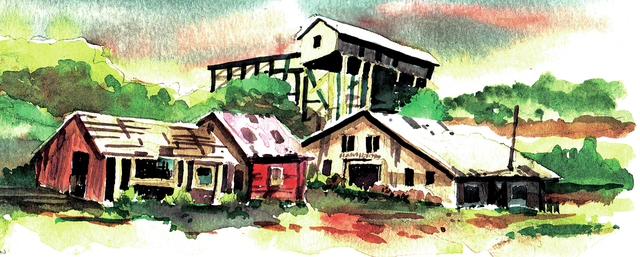Ruins all that remain of once-bustling Hamilton

Ghost towns are scattered all across Nevada. A few of them are still sparsely inhabited, but most are completely abandoned, their tumbling walls and wind-scoured foundations all that remain of communities created by the promise of prosperity.
Today these former boomtowns draw the curious. Most visitors are eager to explore the past, while others hope for a glimmer of the minerals that first brought people to these often remote and hostile sites.
Old Hamilton is one such spot, once home to 12,000 residents and important enough to be named the first seat of White Pine County. Dozens of old camps and mining towns dot the hills and canyons of this mineral-rich area. Hamilton is one of the more accessible ghost towns, reached from U.S. Highway 50 at a turnoff 39 miles west of Ely.
Ely is about a five-hour drive from Las Vegas using Interstate 15 and U.S. Highway 93. The drive is shorter if you take U.S. 93 to the Sunnyside Cutoff northwest of Alamo. This route heads north from Hiko to U.S. Highway 6 and then east into Ely. Either route is quite scenic.
U.S. 93, U.S. 6 and U.S. 50 junction in Ely, the best place in the vicinity to gas up, buy supplies, dine or find lodging. This busy little eastern Nevada town is central to a large area for commerce, banking and county affairs. It is home to the Nevada Northern Railway and Museum as well as the White Pine County Museum. Inquire there about Hamilton and other ghost towns.
Drive west from downtown Ely on U.S. 50, often called “the loneliest road in America.” Just before the turnoff, drivers glimpse Illipah Reservoir. Turn south at the sign for Illipah Recreation Area, a Bureau of Land Management facility popular for picnicking, camping, boating and fishing. After a mile, turn right and drive 1.3 miles to reach the campground and boat ramp adjacent to the reservoir.
There are 17 campsites available on a first-come basis free of charge year-round. The campsites often fill up on summer weekends and holidays. Roofed structures shade tables and benches situated near grills. Drinking water and vault toilets are centrally located. There are no hookups for RVs. Bring your own firewood and plan to take your camp refuse with you for proper disposal.
To reach Hamilton, follow the road south past the recreation area turnoff. Usually kept in good repair, the unpaved road can be negotiated by most vehicles driven carefully. The road can be slippery during spring melt-off and after storms in summer and fall. It is closed in winter.
At about nine miles, you should see what remains of Hamilton’s cemetery. Ghost town cemeteries are always worth a stop, for the markers often indicate untold tales and provide glimpses of life and death on the frontier. Hamilton’s ruins lie about a mile past the cemetery. Spectral walls, stone footings, weathered wooden remnants and an overgrown grid of streets mark where Hamilton stood before diminished ore production, fires and time took their toll.
Hamilton was the largest of several camps spawned by rich horn silver discoveries on Treasure Hill in 1867. The first settlers in 1868 lived in caves and dugouts, giving the camp its first name, Cave City. It was soon renamed Hamilton after an early mine promoter. By the winter of ’68, 600 people huddled at the snow-covered camp trying to keep warm at 8,000 feet elevation.
By the time Hamilton was named county seat of newly formed White Pine County in 1869, it was home to 12,000 people and served thousands more in the surrounding area, where there were more than 200 mines. Hamilton’s bustling city center had many stores, banks, theaters, dance halls, six breweries, 100 saloons and a brick courthouse. Robberies averaged two a week on the twice-daily stage to Elko.
The boom was short-lived. Silver deposits proved too shallow for long-term mining. An 1870 mining depression hit Hamilton hard. Three-quarters of its population moved on. Fires in 1873, 1875 and 1885 devastated the downtown. Ely became the county seat in 1887. Hamilton lost its post office in 1931, a death blow.
Margo Bartlett Pesek’s Trip of the Week column appears on Sundays.